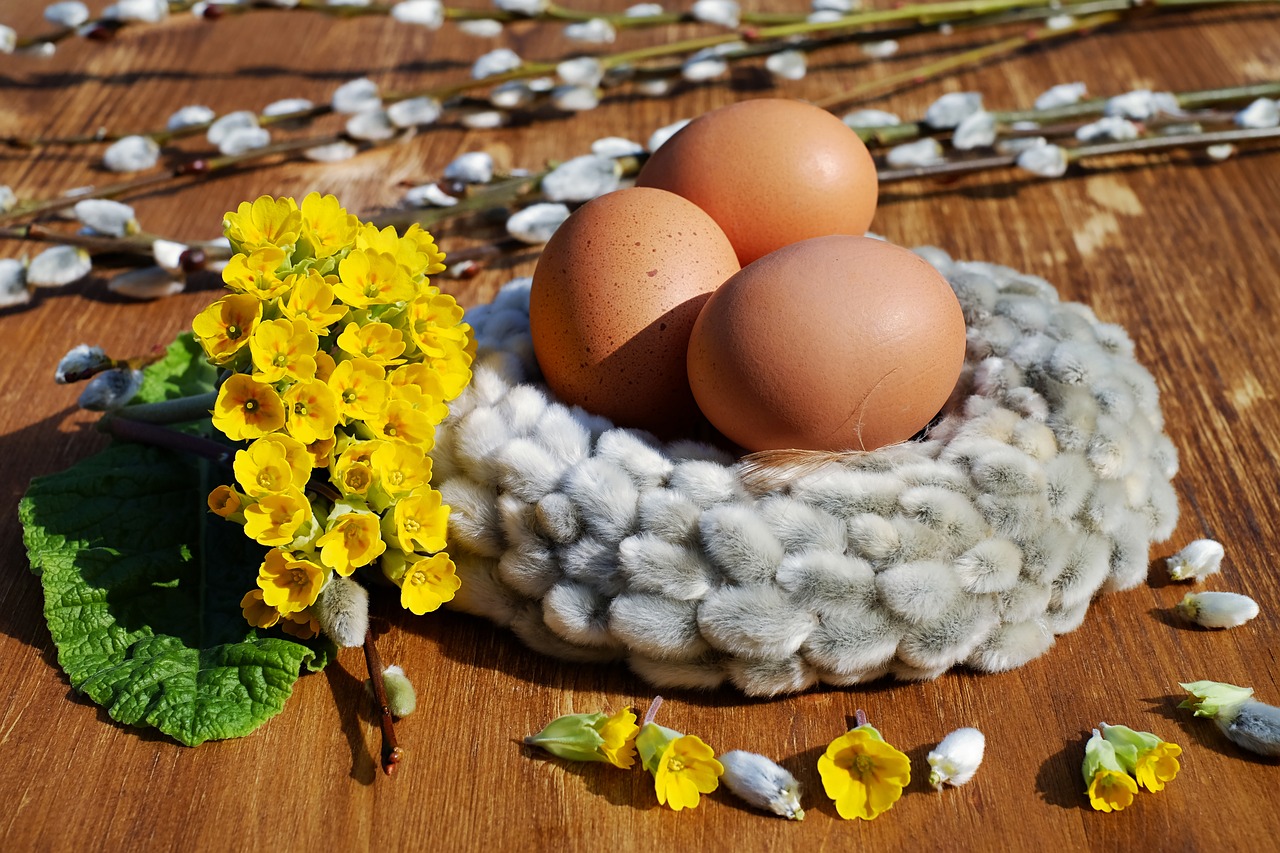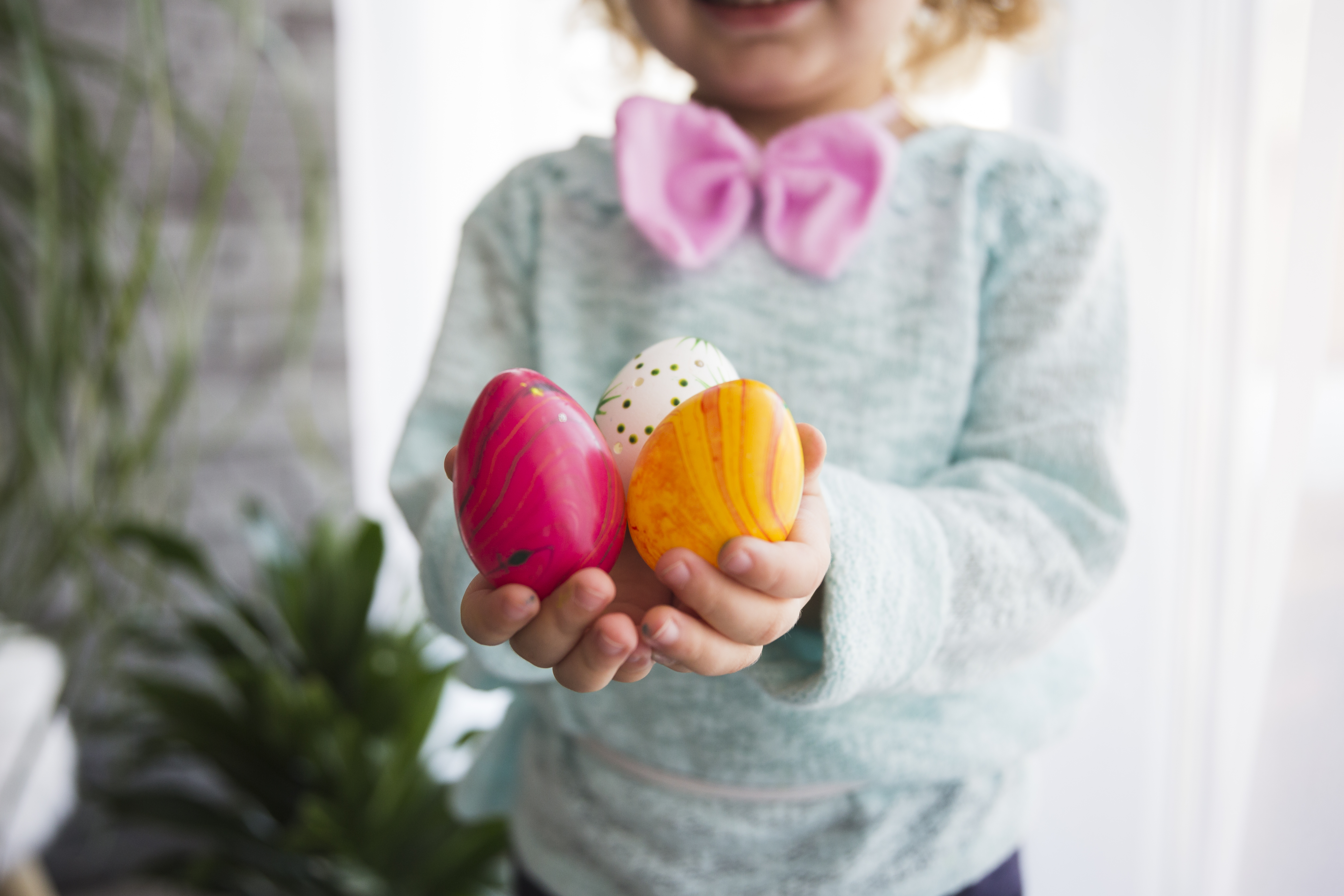ECO KARST - Easter Greetings- Interesting Easter Customs in the countries of the Danube region
30-03-2018
Easter is celebrated around the globe, but the customs can be very different depending on where you live. Here's how Easter is celebrated in ECO KARST pilot area countries.
SLOVENIA
Easter in Slovenia has many colourful traditions and customs dating centuries into the past. It has been important feast for the people of Slovenia. Easter customs in Slovenia can differ from region to region. The essential ham, bread, horseradish and a special Slovenian cake, potica, are at this time of the year accompanied by colourful decorated eggs, in Slovenia called pirhi, pisanice, pisanke, remenice or remenke. Easter ham or velikonočna šunka is first cooked then baked in bread. Famous Slovenian Easter eggs come from Bela krajina, a region in south-east Slovenia. These are called belokranjske pisanice – typical black Easter eggs with beautiful paintings.
CROATIA
Easter is the holiest day of the year in Croatia. Easter observances begin on Palm Sunday and continue throughout Holy Week. Many years ago, local people in some parts of Croatia used to take a flower bucket made of pussy willows (as shown on the photo below) to the church for the Palm Sunday blessing.Unfortunately, it is an already lost folk habit of the people in Croatia, nowadays replaced with carrying olive branches (somewhere in the continental parts of the country they still pick and use the cornelian cherry blossom for this purpose).The branches are decorated with ribbons and flowers and woven into wreaths or crosses, known as poma. They are taken to a church to be blessed. After the blessing, the poma are hung around the house as protection against bad luck and evil spirits.

AUSTRIA
The Easter bunny is a folkloric figure and symbol of Easter in Austria. Parents tell their children that the Easter Bunny brings an Easter basket on Easter Sunday. Traditionally, this basket is filled with dyed hard-boiled eggs and sweet treats like chocolate eggs or rabbits. The children have to find their Easter Baskets that are hidden all over the house and garden. In some catholic areas, especially in the countryside, all church bells stop chiming from Maundy Thursday to Holy/Black Saturday. Instead, children walk through the town making noises with instruments made from wood (the so called “Ratschen”) and reciting special poems.
HUNGARY
An Easter tradition in Hungary involves throwing buckets of water on young women of marriageable age. On the day after Easter, known as Easter Monday, the women dress up in traditional clothing, and young men douse them with water in a custom called “Water Sowing Monday,” or Vízbevető. Nowadays, most of the people celebrate Easter by going out and organizing a picnic for their families.

ROMANIA
The word for Easter in Romania is Paste, with its other form Pasti. The most commonly known and widespread Easter tradition in Romania is painting eggs. Painting eggs is an ancient tradition in Romania. Colours and patterns vary from region to region. Although most households in urban areas choose red dye, in rural areas women still use plants to dye the eggs – boiling red onion leaves is the most common way to make red dye. In some regions, such as the northern region of Bucovina, egg painting is a real art; women there use coloured wax to manually paint the eggshells. These painted eggs are sold later in fairs and can be quite expensive. The traditional food for Easter is anything based on lamb meat. Romanians also bake a cake with cheese, called “Pasca”.
BOSNIA AND HERZEGOVINA
Since Bosnia and Herzegovina is a multi-ethnic country, Muslim, Catholic, and Orthodox holidays and festivals are all celebrated in Bosnia-Herzegovina (depending on the region). Bosnian Croats celebrate Catholic Easter, while Bosnian Serbs celebrate Orthodox Easter. Holiday customs for each of these groups mirrors those in neighbouring Croatia and Serbia. Easter Sunday brings happiness to all Catholic and Eastern Orthodox families, especially children. But children in BiH and the entire region do not have the Easter egg hunts. Instead, it is a kind of 'trick-or-treat' on Easter Sunday. They go door-to-door in their neighbourhoods and wish a Happy Easter. As a reward, they are offered to choose a coloured egg out of Easter basket. Then, they challenge each other to an 'egg-breaking' competition.

SERBIA
In Serbia, Easter means lots of traditions: spending time with your loved ones, fasting, colouring eggs and praying. One Easter-day custom is especially widespread in southern Serbia. It’s called “komka” – a communion taken at home. In one bowl, nettle, geranium, cornel and the Easter cake are soaked in wine. The host of the house holds the bowl while standing on the doorstep next to the hatchet. Family members then step on the hatchet and take part of komka from the host. Each family member jumps as far as he can from the doorstep so they chase away demons and bad luck from their homes. Serbians boil, dye and colour their Easter eggs not on Thursday but on Friday. The first coloured egg is always a red one, which people keep until the next year, because it has a role as guardian of the household. They are the central attraction over Easter, when the whole family, especially the children, enjoy smashing them.
To all of our project partners and friends, ECO KARST team wishes you a wonderful and peaceful Easter holiday!
Sources:
Photos:
https://www.freepik.com/free-photo/flowers-near-eggs-and-nest_1691293.htm
https://www.freepik.com/free-photo/crop-girl-showing-easter-eggs_1697989.htm
www.pixabay.com
Katarina Husnjak Malovec
